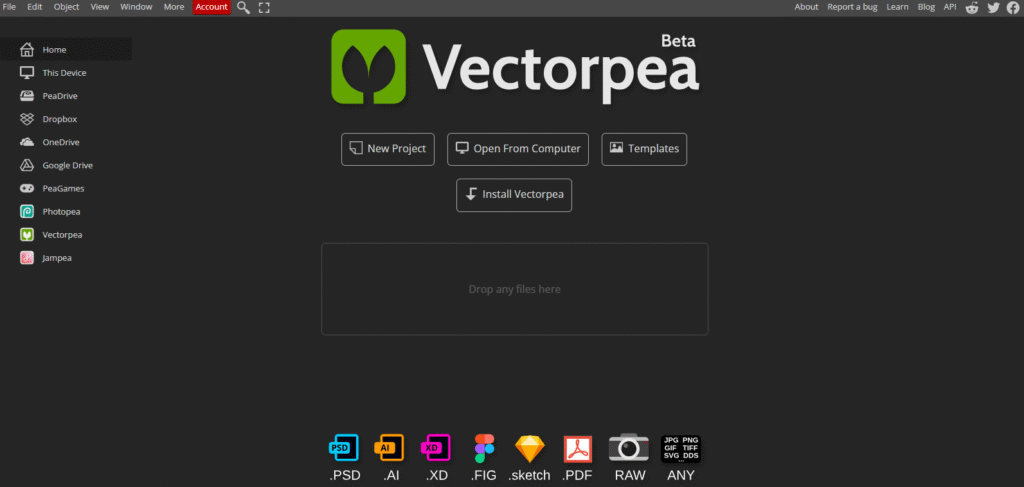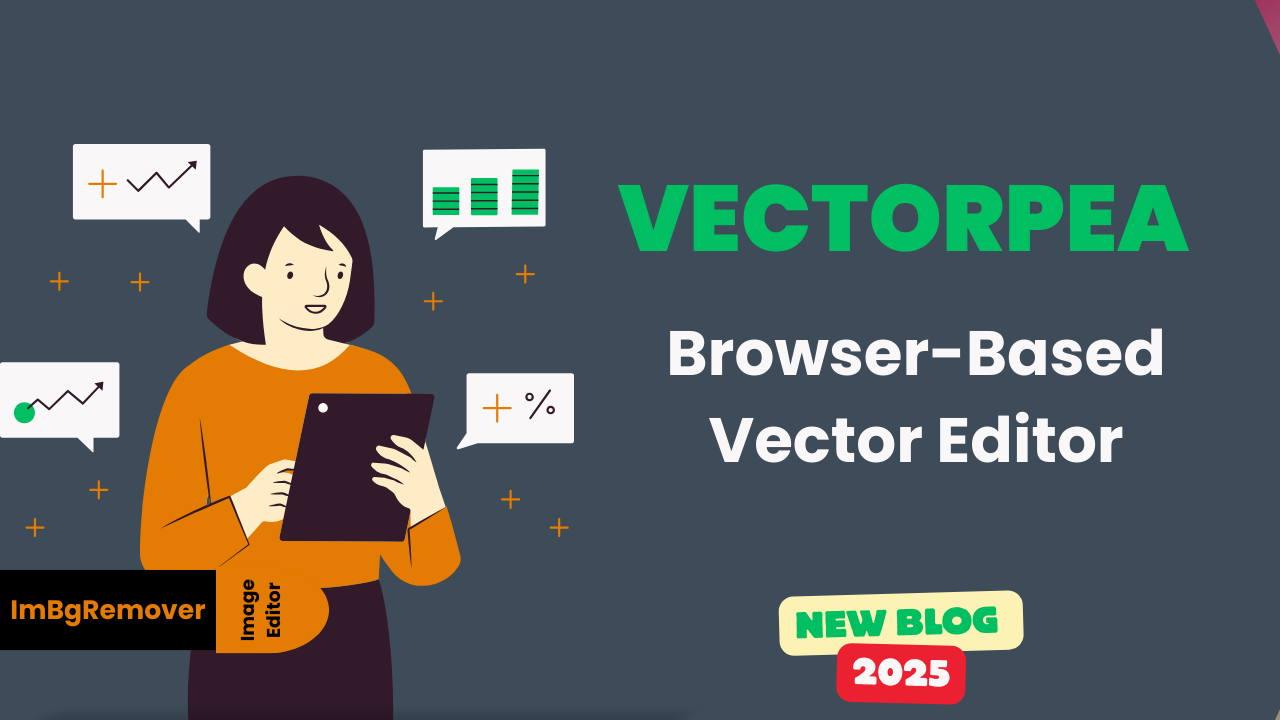Vectorpea Review 2025, Browser-Based Vector Editor
Vectorpea Review 2025
t’s 2025, and the digital landscape is more visually demanding than ever. Whether you’re a graphic designer pushing pixels for a global brand, a small business owner crafting the perfect logo, or a hobbyist turning a sketch into a scalable masterpiece, one tool has consistently been in the conversation: Vectorpea.

But in a world where AI design tools are emerging weekly and software capabilities are evolving at breakneck speed, does a web-based converter like Vectorpea still hold its ground? Is it worth your time and potentially, your money?
I’ve been using Vectorpea for various projects over the last few years, and I decided to put it through its paces once more in this current digital climate. This isn’t just a quick glance; it’s a deep dive into its features, performance, pricing, and most importantly, its real-world value in 2025.
Let’s unravel the story of Vectorpea together.
What Exactly Is Vectorpea? A Quick Refresher
For the uninitiated, let’s break it down. Imagine you have a beloved logo, a hand-drawn sketch, or a low-resolution JPEG that you desperately need to enlarge without it turning into a blurry, pixelated mess. This is where vector conversion comes in.
Vector graphics are images defined by points, lines, curves, and shapes based on mathematical equations. Unlike raster images (JPEG, PNG, GIF) made of pixels, vectors are infinitely scalable. You can blow them up to the size of a billboard, and they’ll remain crisp and sharp.
Vectorpea is a specialized online tool that automates the process of converting raster images into vector formats like SVG, EPS, PDF, and more. It uses advanced algorithms (and increasingly, AI) to trace the outlines of your image and recreate it in a clean, scalable vector format.
Putting Vectorpea to the Test: My Hands-On Experience in 2025
I tested Vectorpea with a variety of images to see how it handles different challenges. My test suite included:
- A simple, clean logo with solid colors.
- A complex logo with gradients and fine details.
- A hand-drawn pencil sketch.
- A detailed, low-resolution photograph.
The User Interface: Blissfully Simple

The first thing that strikes you about Vectorpea is its minimalist, no-fuss interface. There are no complicated dashboards or overwhelming toolbars. You’re greeted with a clean upload box, and the process is a classic three-step affair: Upload, Convert, Download.
This simplicity is its greatest strength for 95% of users. You don’t need a degree in graphic design to use it. You drag your file, select your desired output format and a few basic settings (which we’ll get to), and hit the button. Within seconds to a few minutes, your vector file is ready.
The Conversion Process & Key Features

Once you upload a file, you’re presented with some crucial options that significantly impact your result:
- Output Format: SVG, EPS, PDF, PNG, DXF, and more. This is fantastic flexibility for different workflows (web use, professional printing, CNC machining, etc.).
- Conversion Settings (The Magic Sauce):
- Color Mode: This is huge. You can choose between Full Color, Black and White, or Grayscale. Need a monochrome logo for a laser engraver? This makes it trivial.
- Detail Level: Options like High, Medium, or Low. A simple logo doesn’t need the “High” setting, but a detailed illustration does. This helps manage file complexity and conversion time.
- Corner Smoothness: Adjust how sharp or rounded the corners in your vector paths are. This is a pro-level touch that can make a result look more natural or more geometric based on your needs.
I ran my tests using a mix of these settings to find the optimal output for each image type.
The Results: Where Vectorpea Shines and Stumbles
Test 1: The Simple Logo (PNG to SVG)
- Result: Flawless. The conversion was instant. The colors were perfectly matched, the edges were razor-sharp, and the resulting SVG file was clean with minimal, efficient paths. This is exactly what Vectorpea was built for, and it delivers perfectly.
Test 2: The Complex Logo with Gradients (JPEG to EPS)
- Result: Very Good, with a caveat. Vectorpea handled the shapes and text perfectly. However, gradients are a notorious challenge for auto-tracers. Instead of a smooth gradient, it created a series of layered color shapes that approximate the gradient. For most use cases, especially at smaller sizes, it looks great. But if you need to edit the exact gradient flow in Adobe Illustrator later, you’ll have some cleanup to do. This is a limitation of most auto-tracing, not just Vectorpea.
Test 3: The Hand-Drawn Sketch (JPG to SVG)
- Result: Excellent. This was a standout. Vectorpea excelled at capturing the organic, imperfect lines of my sketch. It created a beautiful, clean vector line art version that maintained the character of the original drawing. It’s perfect for turning sketches into scalable digital art for merch, logos, or illustrations.
Test 4: The Low-Res Photograph (JPG to SVG)
- Result: As Expected. Converting a full-color photograph into a vector is a specialized task that often creates a stylized posterized or pop-art effect. Vectorpea did this competently. The result was a large, complex file with thousands of paths. It’s not something you’d do everyday, but it works for creating specific artistic effects.
The All-Important Question: Pricing and Plans

As of 2025, Vectorpea operates on a credit-based system. You can try it for free with a few conversions, but for serious use, you’ll need a plan.
- Free Plan: A great way to test the waters. Usually offers 2-3 free conversions with a small watermark.
- Paid Plans: They offer packs of credits. A single credit typically converts one image. Bulk credit packs (e.g., 50, 100, 200 credits) bring the cost per conversion down significantly.
- Is it worth it? For a business or a frequent user, absolutely. The time saved versus manually tracing complex images in Illustrator is immense. For a casual user who needs one or two conversions, the free trial or smallest credit pack is sufficient. They also occasionally offer subscription plans for unlimited conversions, which can be a steal for power users.
Vectorpea in 2025: How Does It Stack Up Against the Competition?
The field has gotten crowded. You have built-in tracers in professional software (like Illustrator’s Image Trace), other online converters, and a new wave of AI-powered tools.
- vs. Adobe Illustrator Image Trace: Illustrator’s tool is powerful and customizable, but it has a steep learning curve and is part of an expensive subscription. Vectorpea wins on simplicity, speed, and cost for one-off jobs.
- vs. Other Online Converters: Many are cluttered with ads, have slow servers, or produce inferior quality. Vectorpea consistently ranks higher in output quality and user experience.
- vs. New AI Tools: This is the future. Some emerging AI tools are getting scarily good at understanding image context. While Vectorpea uses AI in its algorithms, dedicated AI image tools might offer different kinds of enhancements. For pure, high-fidelity raster-to-vector conversion, Vectorpea remains a specialized and reliable champion.
The Pros and Cons: A Quick Summary
| Pros | Cons |
| Extremely User-Friendly: The easiest converter I’ve used. | Credit System Can Add Up: If you need to convert hundreds of images. |
| Blazing Fast Results: Conversions take seconds. | Struggles with Perfect Gradients |
| High-Quality Output: For most common tasks (logos, sketches), the quality is exceptional. | Internet Dependent: You need a solid connection to upload and download files. |
| Format Flexibility: Supports all major vector and raster formats. | The cost can become significant compared to an unlimited subscription elsewhere. |
| No Software Installation: Works on any device with a web browser. | A limitation of the technology, not unique to Vectorpea. |
Final Verdict: Who is Vectorpea For in 2025?
After this thorough review, I can confidently recommend Vectorpea, but for specific audiences:
It’s a PERFECT Fit For:
- Small Business Owners & Marketers who need quick logo conversions for print and web.
- Hobbyists & Crafters (e.g., Cricut or Silhouette users) turning images into cut files.
- Designers who need a quick, “good enough” trace without firing up Illustrator.
- Web Developers who need SVG versions of client logos.
- Anyone who values speed and simplicity over deep, manual control.
You Might Look Elsewhere If:
- You are a professional designer who needs absolute precision and manual control over every anchor point (just use Illustrator).
- You need to convert high volumes of images daily and the credit cost becomes prohibitive.
- Your primary work involves converting complex photographs with realistic gradients.
The Bottom Line:
Vectorpea has not only maintained its relevance in 2025 but has refined its offering. It remains the gold standard for fast, simple, and reliable raster-to-vector conversion. It excels at its core mission, providing incredible value for non-designers and professionals alike who need quality results without the complexity.
In the vast toolbox of digital creativity, Vectorpea isn’t the entire workshop—but it’s that one, perfectly sharp, reliable blade you’re always glad to have within reach.
© 2025. This article is the intellectual property of ImBgRemover. All rights reserved. The content, including all text and images, is original and may not be reproduced, distributed, or copied without express written permission. Plagiarism is a violation of intellectual property law and will be pursued.
Feedback & Comments
Thank you for taking the time to read our blog post “Vectorpea Review 2025, Browser-Based Vector Editor” here on ImBgRemover. We truly value every reader, and your opinion matters to us. This section is specially created for our visitors and blog readers to share their experiences, suggestions, and feedback.
If you found this article useful, we’d love to hear your thoughts in the comment box below. Your comments not only motivate us but also help other readers gain fresh perspectives and practical ideas. Whether you are an SEO professional, a beginner exploring digital marketing, or a website owner looking to increase traffic, your voice can make this space more engaging and valuable for everyone.
We also welcome suggestions for future topics or improvements to make our content even better. If you feel there’s something more we should cover about SEO, website growth, or online tools, please don’t hesitate to share. Every piece of feedback is important to us.
For any direct queries, partnerships, or support, feel free to connect with us anytime through our contact us page. Let’s learn, grow, and succeed together!



One Comment